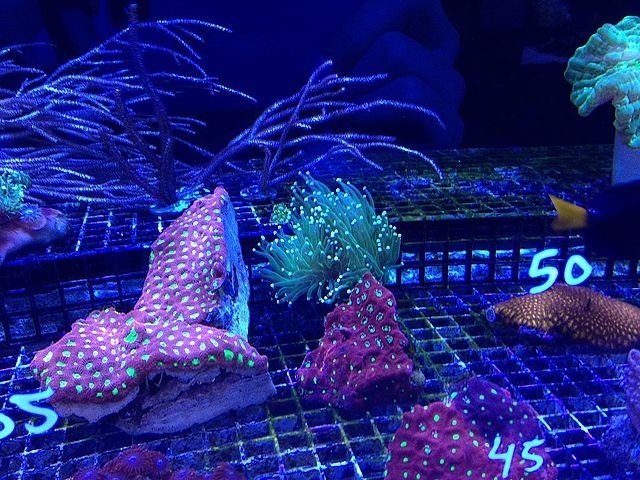USA.- Imagine you could draw a box anywhere in the ocean and instantly decide whether it might be a suitable site for aquaculture. Thanks to a new tool, OceanReports, aquaculture stakeholders—including seafood farmers, coastal managers and regulators, and environmental organizations—can now do just that.
Developed by NOAA’s National Ocean Service and partners, the app can query more than 100 marine datasets. Within seconds, it generates custom spatial reports and infographics for any ocean space or “neighborhood.” These datasets include everything from ocean current speed to deep-sea corals and sponge observations in that area.
Though intended for all ocean industries, the development team built the app specifically with aquaculture in mind. “OceanReports is helping pave the way for sustainable aquaculture development in coastal areas,” said Nicole LeBoeuf, National Ocean Service Acting Assistant Administrator. “It exemplifies how powerful, easy-to-use tools will play an increasing role in ensuring the security and health of our ocean.”
Dr. Michael Rubino is the former Director of NOAA Fisheries’ Office of Aquaculture and new NOAA Senior Advisor for Seafood Strategy. He noted that the aquaculture industry has learned a lot over the past 30 years. They have learned how to manage marine aquaculture through past experiences, new technologies, informed regulations, and the use of best management practices.
“When growers site seafood farms well, they avoid water quality and seafloor impacts, avoid or reduce ocean use conflicts, and conserve important ecologically sensitive ocean areas and species,” said Rubino. “This new tool can help ocean users to better understand sustainable seafood opportunities around the nation.”
With OceanReports, seafood growers can quickly get information about winds and waves, shipping routes, sensitive habitats and potential species conflicts. They can even view statutes, conservation requirements, and mandates that govern the ocean. This can be helpful during early stages of the aquaculture permitting process. Applicants can use this information to inform discussions with regulators and community members at local, state, and federal levels.
“Having the knowledge from OceanReports of a specific ocean neighborhood, like shipping lanes and coral reefs, can increase the understanding of aquaculture opportunities and permitting needs,” said Dr. James Morris, Marine Ecologist for NOAA’s National Centers for Coastal Ocean Science and OceanReports co-developer. “This app will help us avoid pitfalls in the permitting process that come from not knowing the ocean that well.”
Stay Always Informed
Join our communities to instantly receive the most important news, reports, and analysis from the aquaculture industry.
Building Automated Analyses for Responsible Aquaculture
The OceanReports team started preliminary work on the app in 2014. They used data from and built upon Marine Cadastre, a large marine information system representing a decade of investment and data collection.
“We regularly use Marine Cadastre for various aquaculture permitting activities and supporting roles we provide to coastal managers,” Morris said. “Knowing the value of that data, we were thrilled to support the effort to create a tool that automates spatial analyses, bringing the data to everyone within seconds.”
NOAA joined forces with the Department of the Interior and the Department of Energy to gather a large team of experts to develop the app. Together, the team wrote programming language, identified the Marine Cadastre data sources to include, created new data sources for oceanography, and developed the rules and equations for producing infographics.
“Before OceanReports you would have worked for months or years to get the same aquaculture siting information, but now you are able to do that in a second,” Morris reflected. “That’s a light-year advancement.”
Looking Ahead: OceanReports 2.0
Although OceanReports is now available to the public, the work doesn’t stop. The team is already working on new features to improve it.
Enhancements for future releases could allow users to input specific criteria they want for a fish or shellfish farm site. The app would then show them which locations satisfy those conditions.
“You could say, ‘I would like to see where the ocean is between 20 meters and 50 meters deep, and a salinity of this and a temperature range of that, this far away from an inlet or a port,’ for example,” explained Morris. “It’s like reverse engineering. That’s a whole new level of power and intelligence at your fingertips.”
Our oceans cover more than 70 percent of the Earth’s surface, but currently account for only 2 percent of human food. Wild fish harvests are unable to meet current seafood demands. Responsible marine aquaculture, using siting tools like OceanReports, is critical for ensuring a safe, secure, and sustainable seafood supply.
Source: NOAA
Editor at the digital magazine AquaHoy. He holds a degree in Aquaculture Biology from the National University of Santa (UNS) and a Master’s degree in Science and Innovation Management from the Polytechnic University of Valencia, with postgraduate diplomas in Business Innovation and Innovation Management. He possesses extensive experience in the aquaculture and fisheries sector, having led the Fisheries Innovation Unit of the National Program for Innovation in Fisheries and Aquaculture (PNIPA). He has served as a senior consultant in technology watch, an innovation project formulator and advisor, and a lecturer at UNS. He is a member of the Peruvian College of Biologists and was recognized by the World Aquaculture Society (WAS) in 2016 for his contribution to aquaculture.




